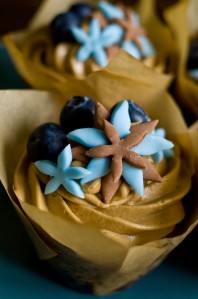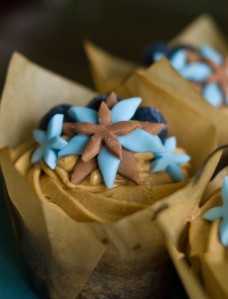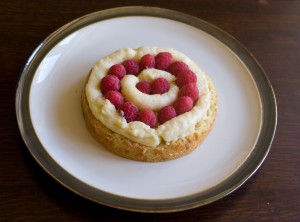Trivia fact of the day, Scandinavian countries drink the most coffee (per capita) in the whole world. Out of the top 6 countries (according to Wikipedia), the only other country to come close is the Netherlands – hardly a surprising inclusion. We mentioned the importance of coffee during the creation of the Icelandic Slongakuka, but today we are going for a different take, and travelling rather to the mainland of Scandinavia, Norway.
Coming in a second place – Finland takes first – Norway consumes 9.9kg of coffee per person, per year. The coffee culture in this country is on of the most developed in the world, and is an integral part of the societal culture. This cake was designed to incorporate this important flavour, but to combine it with a fruit into a muffin that could be eaten alongside. Blueberries grow throughout Norway, and their natural affinity with coffee made them a natural option to include in the cake. The coffee flavour is very strong in this recipe, hence the title ‘espresso’. If you prefer a lighter flavour, then halve the quantity.
Espresso and Blueberry Muffins
Ingredients:
- 8oz butter
- 8oz caster sugar
- 4 eggs
- 1 tsp vanilla essence
- 8oz plain flour
- 3 tsp baking powder
- 3 tbsp instant coffee
- 3 tbsp boiling water
- 2 punnets of blueberries
- 120g butter
- 375g icing sugar
- 2 tbsp instant coffee
- 30ml boiling water
- White icing
- Blue food colouring
- 1 tbsp cocoa powder.
Instructions:
Preheat the oven to Gas Mark 5 and line a 12-hole muffin tin with muffin liners. Cream together the butter and sugar, before adding in the eggs and vanilla extract. Beat in the flour and baking powder and mix well. Dissolve the coffee in the boiling water before adding to the cake mixture and beating until completely combined. Reserve 1/4 of the blueberries and gently fold the remainder into the cake mixture, trying not to break the berries. Spoon the mixture into the cases and bake in the oven for 30 minutes until golden brown and cooked through. Leave to cool completely.
Whilst the cakes are cooling, make the flowers.Take a golf ball sized piece of white icing and briefly knead it, before using a few drops of blue food colouring to create a pale blue fondant. Roll it out to 3mm thick and cut out flower shapes using both a small and large cutter. Colour another golf ball sized piece of fondant brown using the cocoa powder before following the same process to cut out more flowers. These may be either used individually or stacked. Set aside to dry.
Once the muffins are cool, make the icing by beating the butter, icing sugar and coffee (again dissolving the instant coffee in the boiling water) until it is thick and fluffy. Spoon into a piping bag fitted with a large star-shaped nozzle and pipe onto the top of each muffin, before decorating with the icing flowers and reserved blueberries.





